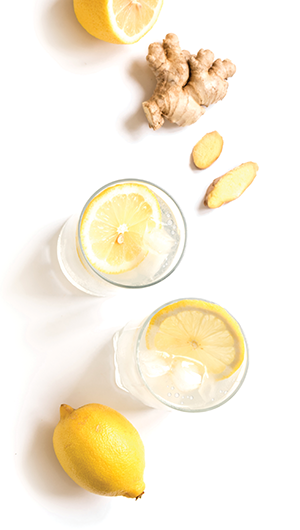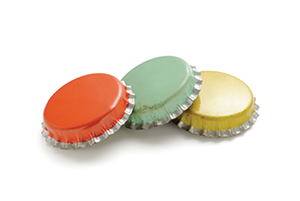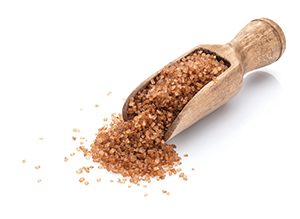 You know your brand has made it when it is featured as a limited-time-only Slurpee flavor at participating 7-Eleven stores. That was the case last summer for Jones Soda Co., when its birthday cake soda flavor appeared as an option for the iconic frozen dispensed drink at 7-Eleven stores across the Pacific Northwest. Customer response to the LTO was “phenomenal,” reported Mark Murray, president and CEO of Jones Soda, who noted that the drink—a tribute to the brand’s 25th anniversary, which coincided with the convenience store chain’s 94th birthday—was just the latest in a series of collaborations with 7-Eleven over the years, and more are forthcoming.
You know your brand has made it when it is featured as a limited-time-only Slurpee flavor at participating 7-Eleven stores. That was the case last summer for Jones Soda Co., when its birthday cake soda flavor appeared as an option for the iconic frozen dispensed drink at 7-Eleven stores across the Pacific Northwest. Customer response to the LTO was “phenomenal,” reported Mark Murray, president and CEO of Jones Soda, who noted that the drink—a tribute to the brand’s 25th anniversary, which coincided with the convenience store chain’s 94th birthday—was just the latest in a series of collaborations with 7-Eleven over the years, and more are forthcoming.
Jones and other craft soda marketers see big opportunity to expand their products in c-stores, driven by the channel’s movement toward more upscale offerings and increasing consumer demand for better-for-you and cleaner drinks. “Craft soda is a great fit for retailers who are building out more premium food offerings as it provides a point of differentiation,” said Chase Slepak, COO at Boylan Bottling Co. With the premiumization trend in c-stores today, Boylan is putting a “big focus” on the channel, he noted, with chains including Speedway among those carrying the company’s drinks.
Norman Snyder, CEO at Reed’s Inc., the marketer of Reed’s and Virgil’s sodas, said he’s impressed with the transformation of food and beverage programs at so many c-stores, and for the past year, he’s been meeting with chain beverage buyers. “There’s been a massive change in the offerings, including made-to-order food and better-for-you cooler doors,” noted Snyder, adding that with c-stores’ clout with carbonated soft drinks, the channel marks the “final frontier” for marketers like Reed’s.
Similarly, Jim Fiene, vice president, convenience sales, at Sprecher Brewing Co., whose craft sodas are distributed in 35 states, said the company is emphasizing a new 16-ounce can for c-stores. Among the outlets where Sprecher sodas are available are 7-Eleven and Kwik Trip.
Craft soda is a great fit for retailers who are building out more premium food offerings as it provides a point of differentiation.
NASCENT SUBSEGMENT
Craft sodas—which Murray loosely defined as “high-quality beverages, made from cane sugar, clean ingredients, innovative and fun”—remain a tiny segment within carbonated soft drinks. He put total sales of craft sodas at about $600 million annually, as compared to $35 billion for total carbonated soft drinks (CSD) sales. Still, Murray and other craft soda marketers noted that the premium beverages are growing at a healthy high-single-digit to low-double-digit rate while overall CSD sales languish.
Unlike other upscale subcategories like craft beer, craft soda has been slow to gain significant share in the packaged beverages category. Slepak surmises that may be due to soda’s image these days as being an unhealthy, sugar-laden beverage.
Rachel Krupa, owner of the Goods Mart in New York City, agrees. “People assume that a craft soda is still going to have the sugar and high calories of a traditional soda, and they’ve been preached to that sugar is bad,” she said. Indeed, Kristen Wemer, director of technical services at Flavorman, a beverage flavor consulting company, noted that some craft sodas are marketed as craft cocktail mixers or non-alcoholic cocktail alternatives to avoid the soda label. She added that consumers are more likely to indulge in “special occasion” alcoholic beverages than sodas, noting that alcoholic products have “benefited from years of not having to declare any nutritional stats,” and attributes like sugar content in those beverages aren’t as obvious as they are with non-alcoholic drinks.
Others said that the grassroots nature of products like craft beer has aided their growth, something craft sodas can’t often claim. “Craft breweries have done an incredible job with the grassroots movement,” remarked Snyder. “People support craft beer because it’s local.” Fortunately for Sprecher, it’s able to leverage thousands of customer visits to its Milwaukee brewery and promote its line of craft sodas. Fiene believes that the craft soda segment is “at the same place craft beer was 10-20 years ago. As consumer tastes get more refined, they’ll demand better taste, local ingredients, small-batch and hand-crafted products.”
Some craft sodas are marketed as craft cocktail mixers or non-alcoholic cocktail alternatives to avoid the soda label.
‘POP AND FIZZ’
The typical craft soda consumer is more health conscious than the average CSD drinker. Slepak said that Boylan sodas, made with all-natural ingredients and no high-fructose corn syrup, “resonate with ingredient-conscious consumers.” Snyder added that fans of Reed’s and Virgil’s sodas are “label readers and are willing to pay a premium for beverages that don’t contain preservatives.” And Isabel Atherton, director of marketing for Sunny Sky Products, which produces craft sodas such as Pure and Jarritos for soft drink fountains, said her consumers are often looking for “hand-crafted, artisan products.”
According to Goods Mart’s Krupa, who reported a big increase in better-for-you and craft soda sales in recent years, “new age soda consumers tend to be young, millennials and female.” Among the standouts at the two-unit chain are Virgil’s, Olipop sparkling tonic and Culture Pop probiotic soda. At Goods Mart’s newest Manhattan location, caffeine-loving consumers have been asking for Diet Coke, a product the store doesn’t carry, so Krupa said it will soon begin offering Virgil’s Zero Sugar Cola, Root Beer and Cherry Cream products. Some craft sodas, such as Olipop, are even attracting non-soda consumers, the retailer noted. She described those customers as focused on “gut health, but they like the pop and fizz that comes with soda.”

Despite the growing opportunity for craft sodas in c-stores, there are challenges, too. “Cooler space is tight,” conceded Jones Soda’s Murray. “A retailer must decide what to take out.” Benjamin Hoffmeyer, vice president of marketing and merchandising at Texas’ TXB Stores chain, agreed. “Whether it’s vault coolers or space on the fountain, finding space to leverage craft sodas can be challenging,” he said, “as often it means displacing national brands and potential funding.”
Craft soda’s traditional package—glass bottles—is another concern for retailers. Due to breakage, the bottled drinks are often merchandised on the bottom shelves of coolers, a tactic that doesn’t match up to their premium image, Slepak said. As a result, some marketers are now offering alternative packages for c-stores. Reed’s, for example, recently relaunched 20-ounce resealable PET bottles, and like Sprecher, it sees opportunity for canned options. Pointing to the success of products like craft beer, hard seltzers and cold-brew coffees in cans, Snyder said, “every year, more and more chains ask for cans.”
New age soda consumers tend to be young, millennial and female.
DRINKS DIVERSITY
According to suppliers, craft soda at the fountain allows c-stores to expand diversity of dispensed beverages beyond leading national brands. Murray suggests operators reserve one handle for innovation, or “something Coke and Pepsi don’t have, not to cannibalize them, but to augment. The fountain can build equity.” Sunny Sky’s Atherton agreed, encouraging retailers to consider secondary and tertiary slots at the fountain for brands like Pure, which is naturally sweetened and contains natural flavors and no corn syrup. While she conceded that vendor contracts can make it challenging to feature craft sodas at the fountain, she noted that many consumers today enjoy “fusion flavor combinations” and blending unique soda flavors themselves.
Rutter’s c-stores offer as many as nine fountain craft beverage options through a partnership with Sunny Sky, Chad White, foodservice category manager at the chain, reported, including such flavors as ginger beer, pineapple cream and homestyle lemonade. “While the top Coke and Pepsi flavors still maintain the majority of the volume, craft beverages have provided the customer with a unique alternative, and we continue to see incremental success since we added them,” White said.

TXB, meanwhile, features dispensed craft sodas under the TXB brand, and according to Hoffmeyer, the products are doing well, “driven by unique sweet fruit and sour flavors, as well as traditional Texas flavor favorites.” The craft beverages contain pure sugar cane, rather than corn syrup, and flavors include blue crème, cherry limeade, blood orange and strawberry lemonade. The chain is considering adding packaged TXB craft sodas, he said.
Hoffmeyer, White and Krupa all see continued opportunity for craft sodas in their stores. “Just like craft beer, I see customers wanting to know where their soda was made and the story behind it,” remarked TXB’s Hoffmeyer. “Craft soda brands that focus on flavor, social causes and reinforcing the uniqueness of their products will continue to attract demanding customers.” Suppliers are equally enthused about the prospects for their brands in c-stores. Said Reed’s Snyder, “As retailers continue to offer better-for-you and premium offerings, demand for craft sodas will follow.”